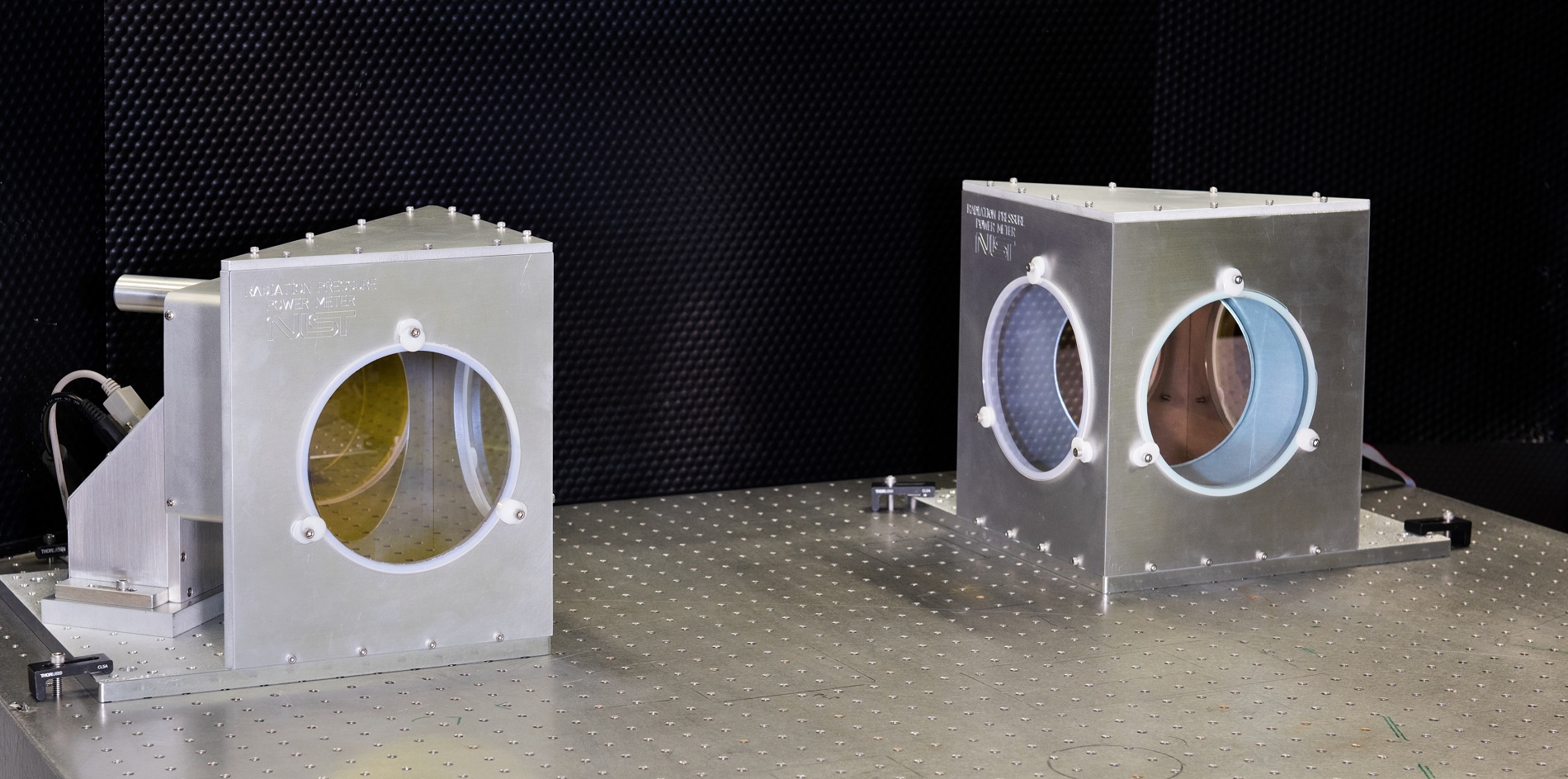May 01, 2018
Researchers at the National Institute of Standards and Technology (NIST) have been developing a novel way of measuring laser power. Their device, called the Radiation Pressure Power Meter (RPPM), makes its measurements using the force exerted by the laser light itself.
The NIST team has now fully tested this instrument at the highest power to date – 50 kilowatts (kW) – using a laser at the High Energy Laser Systems Test Facility (HELSTF), operated by the U.S. Army and located in New Mexico. By comparison, a 5-kW laser beam can cut through an inch of steel.
“We don’t have tens of kilowatts of laser power at our disposal here at NIST,” said NIST physicist Joshua Hadler. “This was an opportunity to go at power levels that we’ve never got to before.”
NIST researchers had already tested their RPPM using their own highest-power laser, at 10 kW. But HELSTF is home to much more powerful lasers, used for research, development, testing, and evaluation of directed energy technology for the U.S. Department of Defense (DoD). NIST performed the tests at the behest of the U.S. Army and Navy. In particular, the Naval Surface Warfare Center, Corona Division (NSWC Corona), in California has been a critical and founding supporter of this technology.
“The RPPM is truly a revolutionary technology that is yet to reach its full potential,” said Subrata Sanyal, chief scientist at the NSWC Corona’s measurement science and engineering department. “We’re proud to continue our strong collaboration with NIST in its pursuit to empower the world with this ‘out-of-the-box’ primary standard calibration of laser powers, from industrial lasers to military lasers, as well as to validate the RPPM at higher optical powers.”
Weighing Light
Traditional techniques for gauging laser power require using an apparatus to absorb all the energy from the beam as heat. Measuring the temperature change allows researchers to calculate the laser’s power.
But with very high laser powers, this conventional method becomes tricky to implement. If the instrument is not properly cooled, it could be destroyed by the laser beam that it is supposed to measure.
Instead of acting as a heat sink, NIST’s RPPM works by measuring the pressure of laser light on a mirror.
Light has no mass, but it does have momentum, which allows it to produce a small amount of force, or “radiation pressure,” when it reflects off an object. For example, a massive, 100-kilowatt laser beam will have a small but noticeable force – the equivalent weight of about 68 milligrams (mg, thousandths of a gram), approximately the weight of two staples.
To measure such tiny forces, NIST’s RPPM uses a high-precision laboratory balance with a mirrored surface capable of reflecting 99.999% of the light that hits it. When a beam of a multi-kilowatt laser reflects off the mirror, the pressure it imparts is recorded by the balance. The force measurement is then converted to a power measurement.
The HELSTF laser has previously been measured with state-of-the-art heat sink-style laser power meters, but these have limitations. Each power test takes several minutes to complete. Furthermore, researchers can’t use the heat sink device at the same time that they are doing research with the laser because the measurement devices absorb the laser beam. They also tend to be bulky and heavy, with large power and cooling requirements.
In contrast, the RPPM is small (the unit is about the size of a shoe box), has low power and cooling requirements, and makes its measurements in real time. Since the laser beam bounces off the mirror intact, the light can be used directly for applications. And unlike the heat sink device, the RPPM is a primary standard in itself, meaning it does not need to be compared to other power meters to establish its accuracy.
Taking the Heat
The first question Hadler and his colleagues had to answer when they arrived in New Mexico was: Would the RPPM become damaged by the 50-kW laser?
“We had never fully tested it at such a high power before,” Hadler said. “So we wanted to know: Does it get too hot? Does it survive?”
They set up infrared cameras and other temperature sensors and found that it performed “perfectly, just the way we would expect,” Hadler said. “We could see a little bit of heat on the mirror, but not much, just a few degrees tops.”
Once they were satisfied that the instrument could take the heat, NIST staff used it to perform nearly 300 measurements of the HELSTF laser’s power from 1 kW to 50 kW over a two-week period. They found that the RPPM was capable of measuring the power across that entire range with an accuracy of 1.3% to 4.5%.
“It just worked,” Hadler said. “It was gratifyingly like an appliance.”
The researchers also tested the RPPM against several other laser power measurement instruments at HELSTF and found wide variability in the accuracy of ten different detector technologies.
Hadler says the NIST team has an open request to industry and other government agencies who want their high power lasers calibrated with the new RPPM. Meanwhile, there is interest in returning to HELSTF to test the RPPM’s accuracy at even higher powers, possibly exceeding 100 kW. In theory, the instrument should continue to perform.
“There is realistically no ceiling that we can anticipate,” Hadler said.
On the other end of the application spectrum, NIST researchers are trying to miniaturize the technology. They are currently working on a chip-scale version of the device – called the “Smart Mirror” – which will be used for lower-power lasers, from 1 to 1000 watts. The smart mirror could potentially be integrated into laser weld heads and additive manufacturing machines for real-time, continuous laser power measurements.
The RPPM-anchored HELSTF test event was jointly supported by the Office of the Secretary of Defense Test Resource Management Center and the Directed Energy Joint Technology Office.
-- Reported and written by Jennifer Lauren Lee












